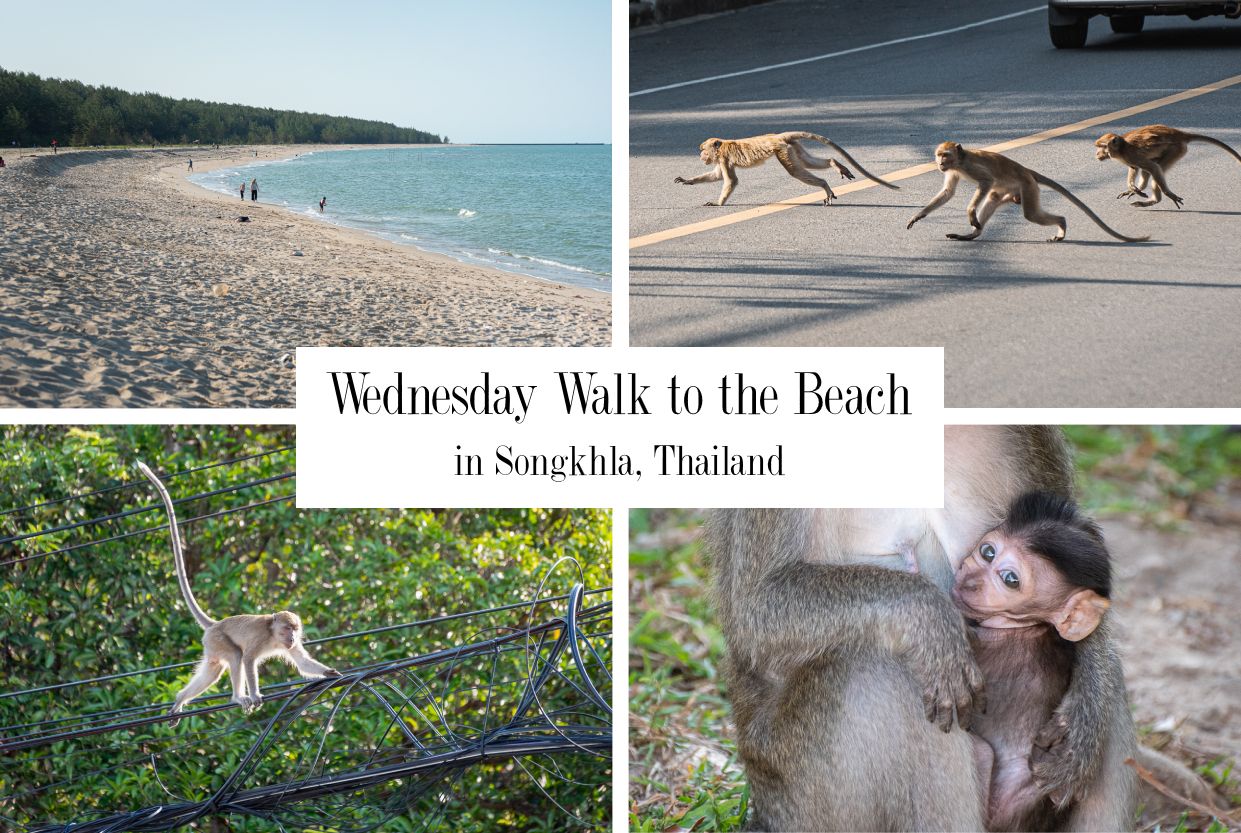
Songkhla beats all records for interesting birds per square meter. I mean, I photograph them from the window of my room and in the street, right outside of the guesthouse.
And that was what happened on March 16 as soon as I went out for a photography walk with a telephoto lens: the high-pitched chirp attracted my attention, and I noticed shaking in the bush of yellow trumpet flowers. I already knew what to expect - the ornate sunbird:
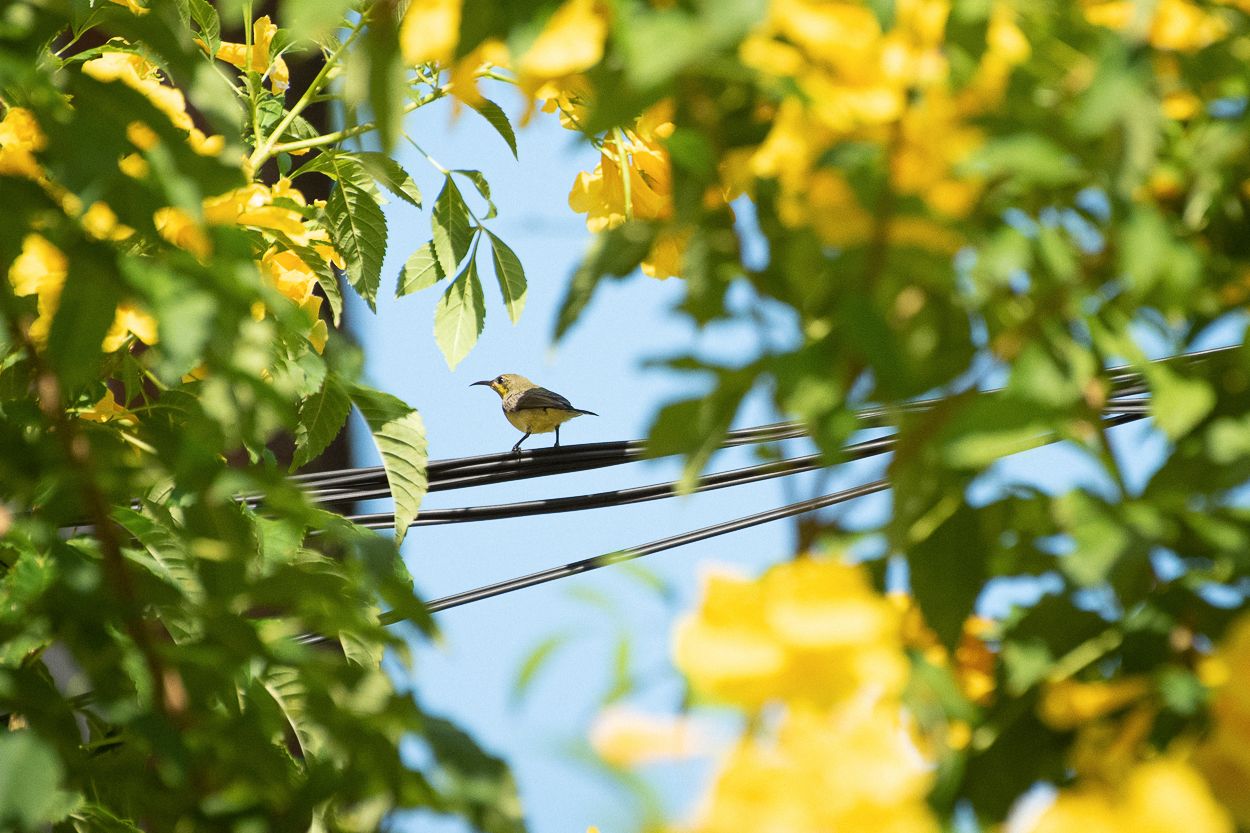
They are tiny birds that feed on flower nectar; smaller than sparrows, and they benefit from this: many creatures, including humans, overlook them as insignificant.

Sunbirds can stay busy in the bushes even when you are very close — until you start openly watching them. If so, they leave the place at bullet speed.
Walking further. A route from Yuma Guesthouse to Samila Beach takes 20 minutes, and passes by the monkey mountain with a stupa on the top:
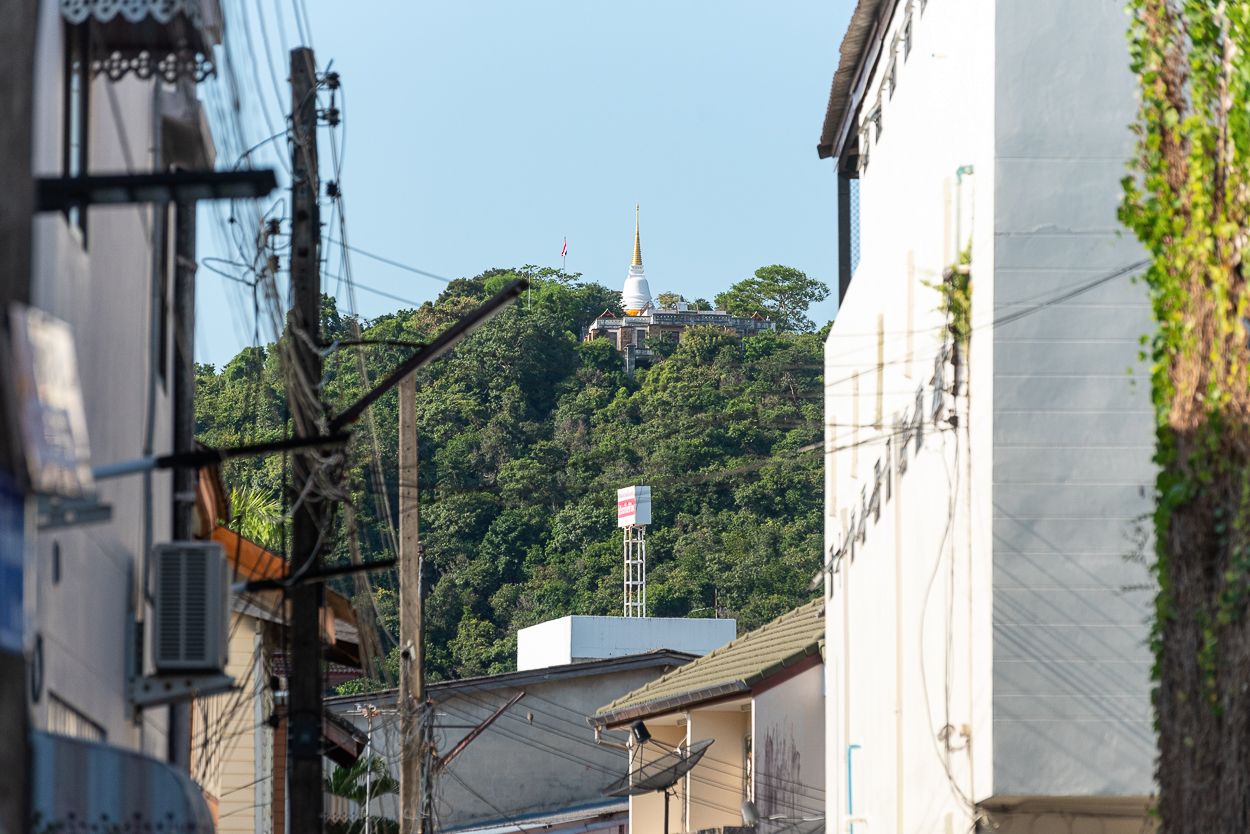
I posted about
Songkhla monkeys previously. The colony is huge and might include up to
4000 monkeys as some mass media sources claim.
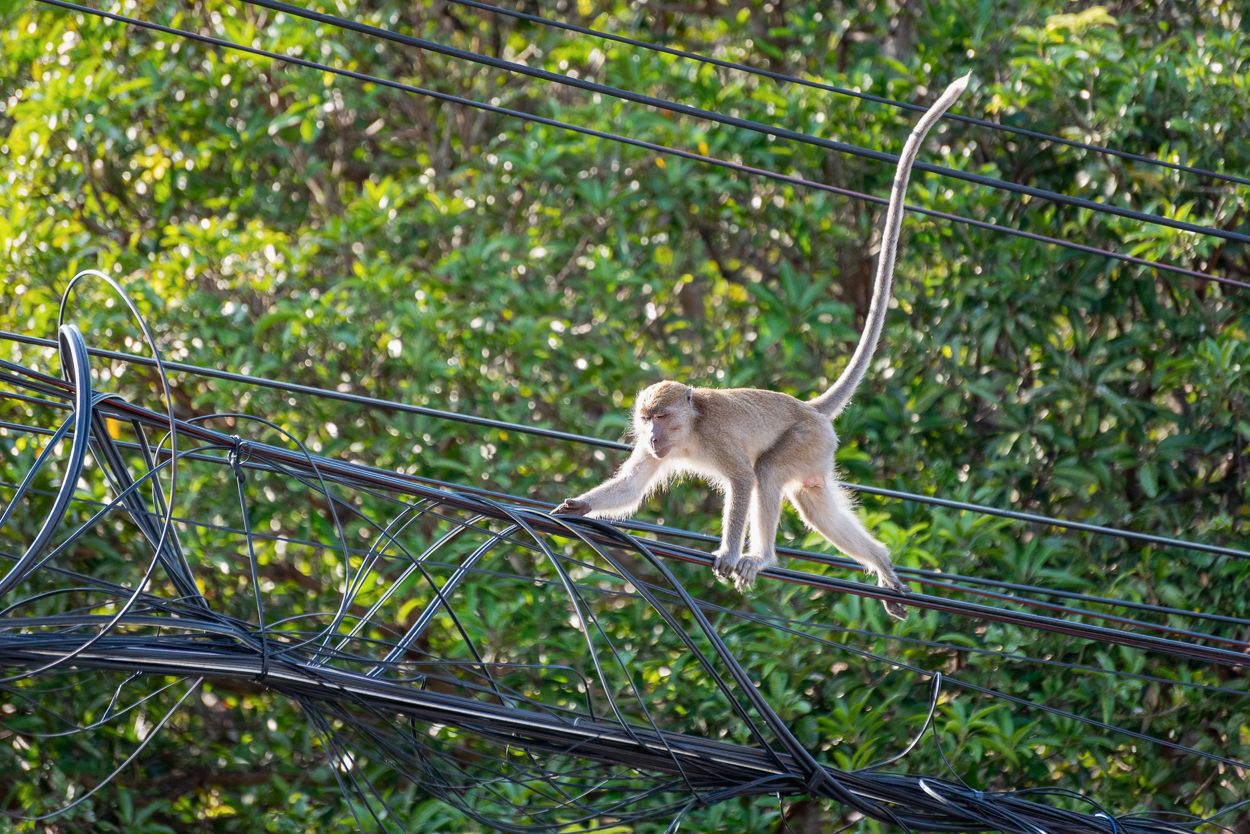
To me, it sounds like an exaggeration or outdated information but no doubt there are many hundreds of monkeys living in Songkhla City.
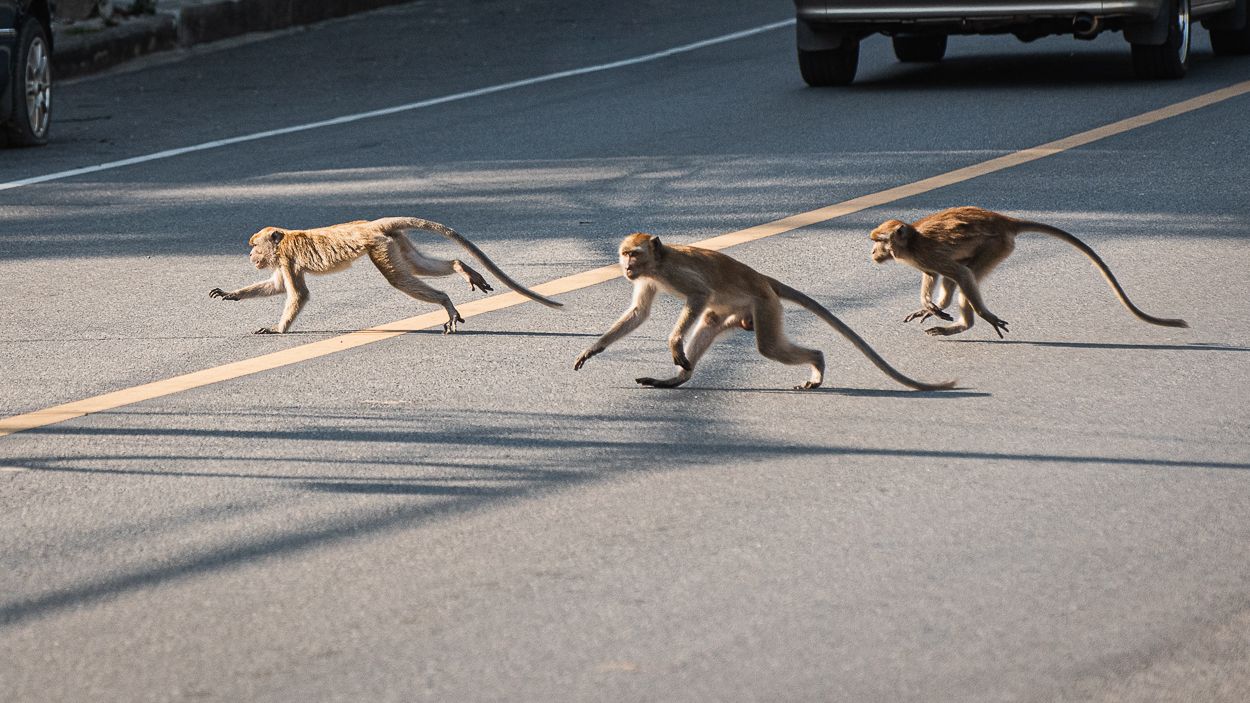
Local people feed them well (individuals and probably the city government too), and monkeys stay peaceful.
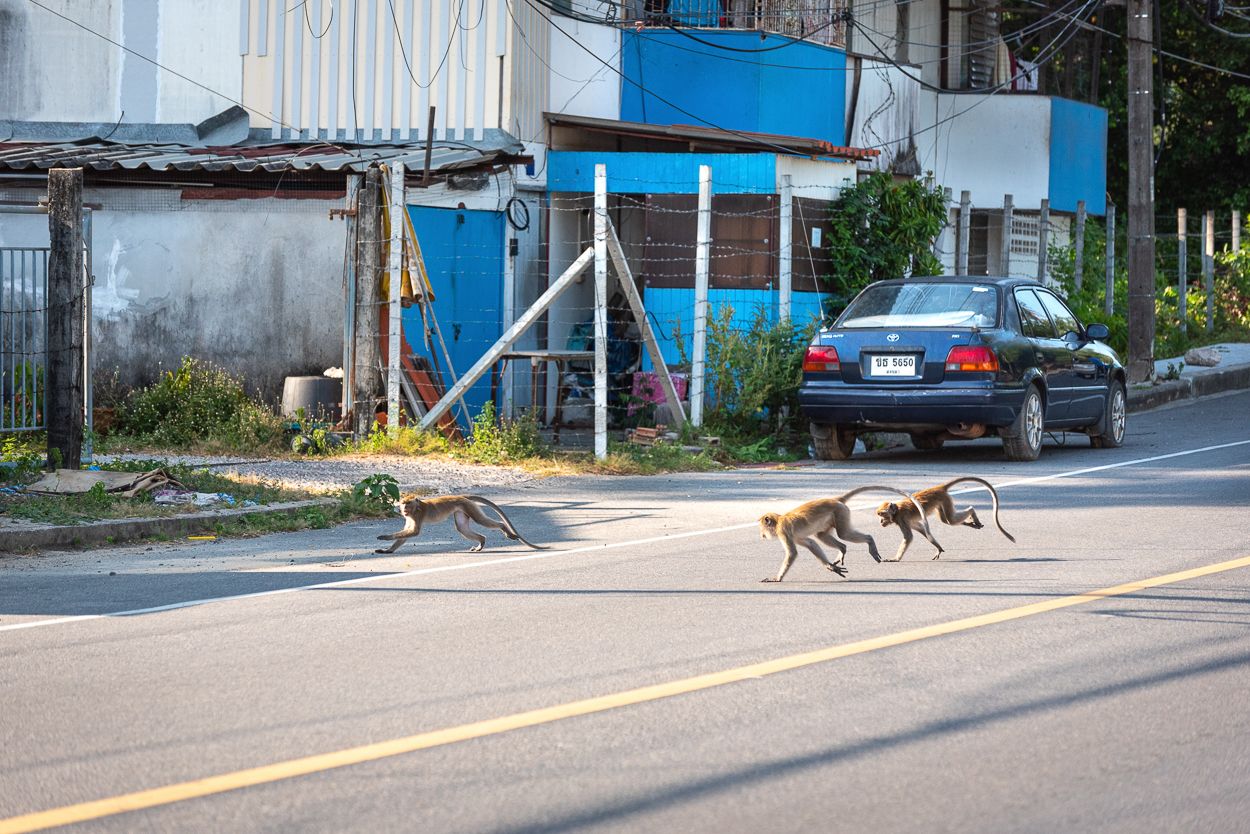
Peaceful until you challenge them like
I did when I was taking images of a lone panicking baby monkey.
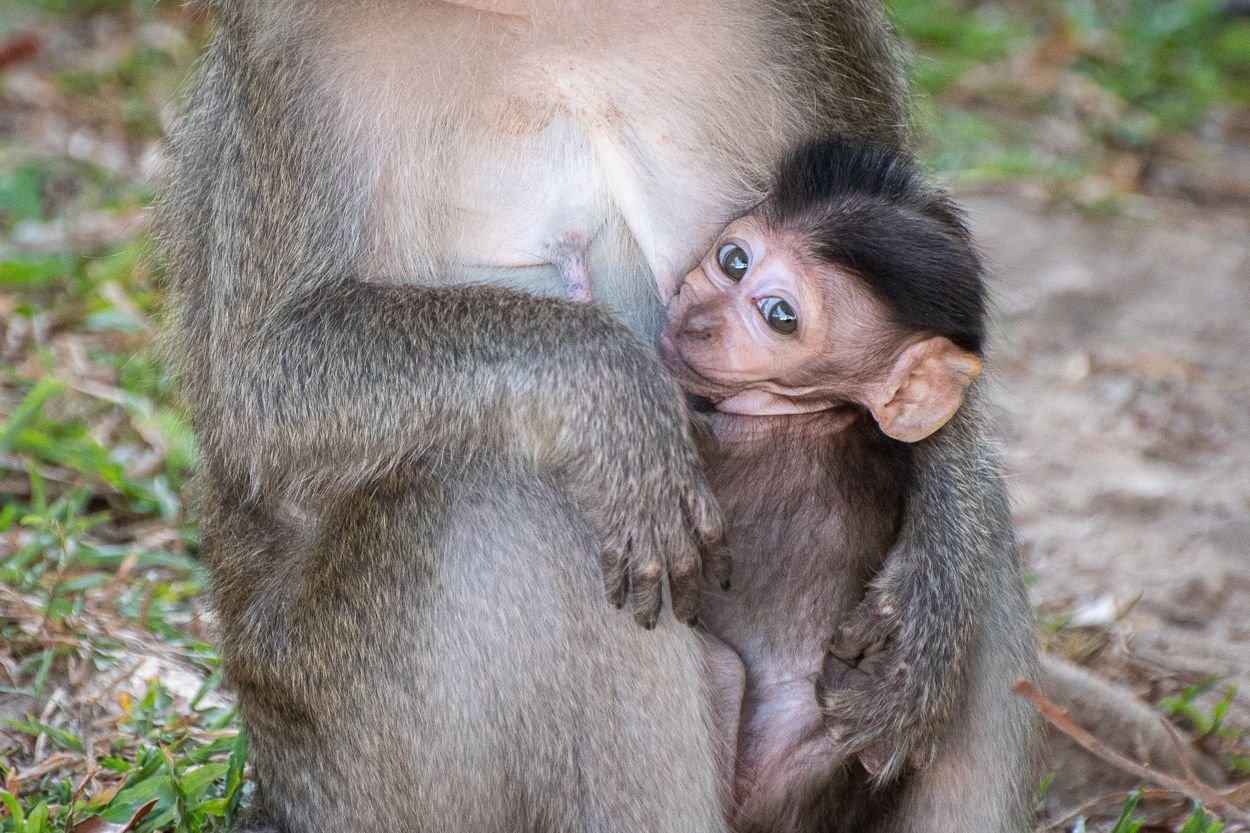
I've spent a lot of time near them with my camera (I've been staying in this city for almost a month). Near them, but not among them.
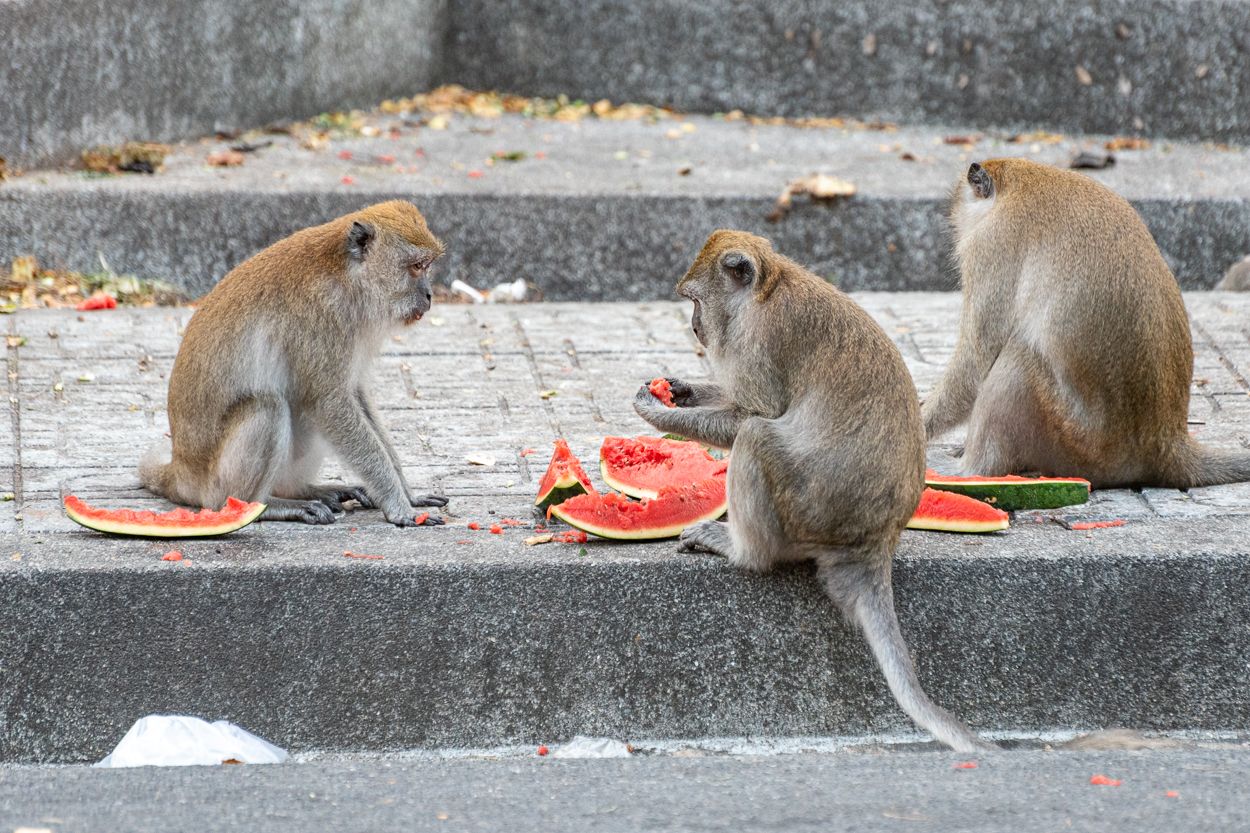
I am not the only one who feels cautious about Songkhla macaques - locals often carry sticks when walking streets, abundant with monkeys.
Five minutes from the monkey mountain:
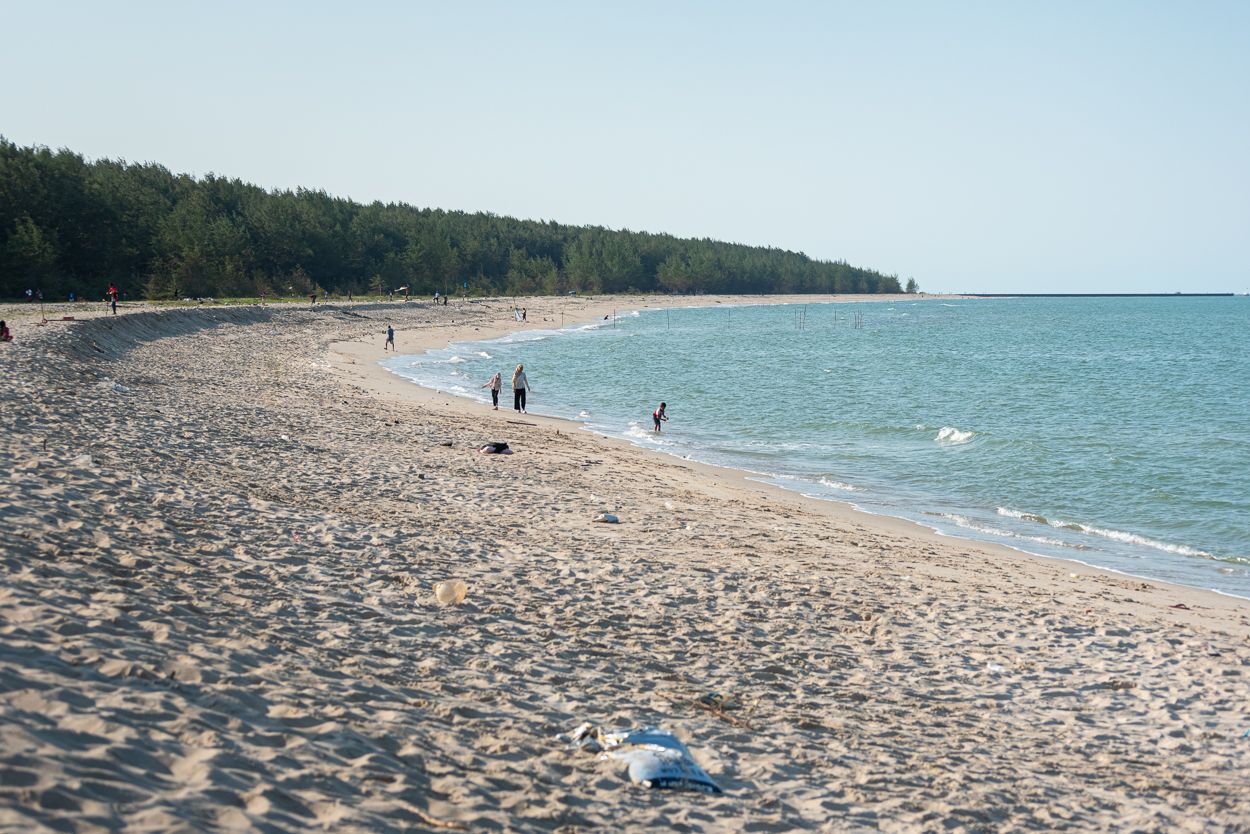
Samila Beach (with a casuarina grove I want to explore later).
Locals consider it the best place to hang out by the sea because it has an area with shallow water, also protected from the open sea by a cape:

Children can safely frolic in the water there. As for local adults, they don't swim.
Nevertheless, the beaches of Songkhla are crowded by the end of the day - local families are having a picnic by the sea.
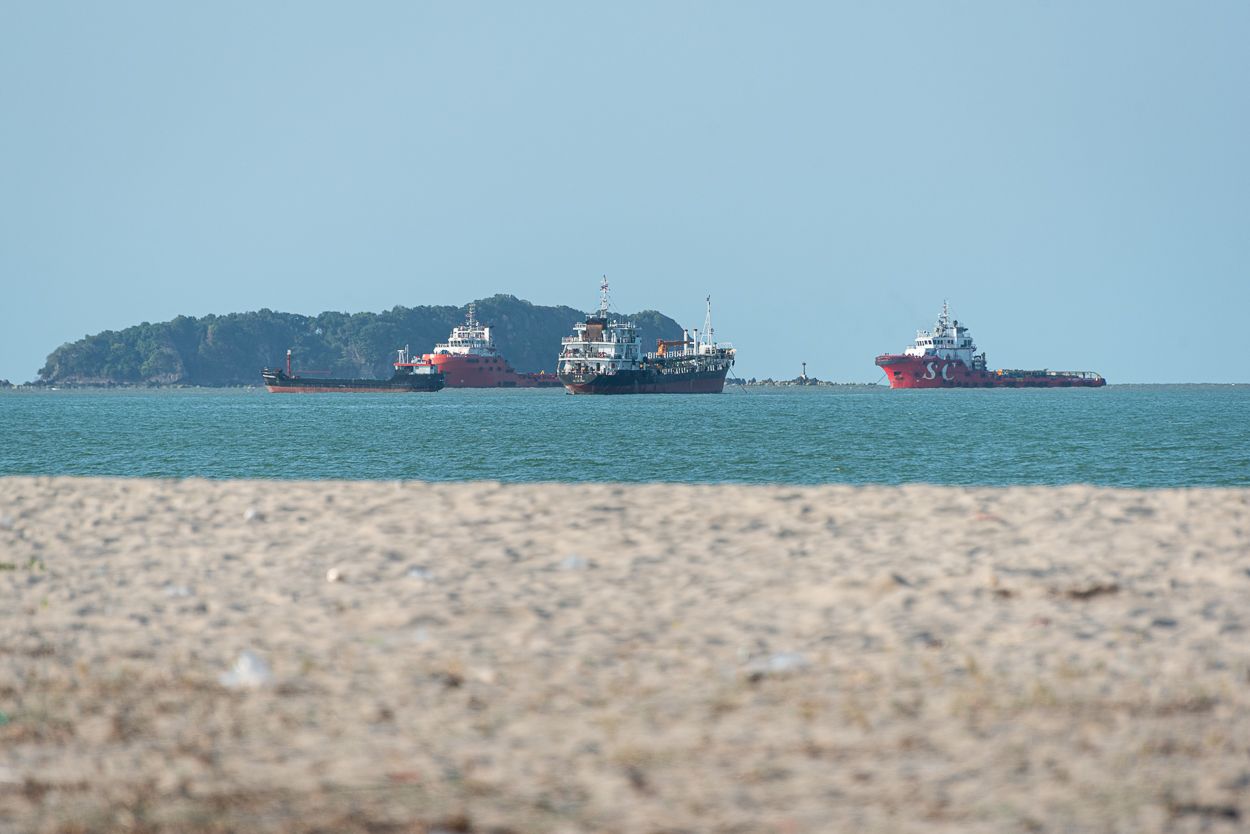
Songkhla isn't a beach destination, with very few Western visitors. So beaches stay untidy with some garbage thrown away by the sea. However, can't say there are heaps of trash on Songkhla beaches; overall, it's okay there. And water is clean.
Why no beach-goers? Songkhla hasn't become a beach destination for probably two reasons: firstly, when the sea is rough, the color of the water is awful and waves make swimming uncomfortable, and, secondly, Songkhla province is located near unstable provinces so some countries don't even recommend visiting Songkhla, lol.
As for me, I enjoy swimming twice a week: several kilometers of the beach, and I am the only one in the water (not counting that insane person kitesurfing all day long).
However, when I'm on a photo walk, I don't swim — I don't want to leave my camera unattended on the beach.
Coming back:
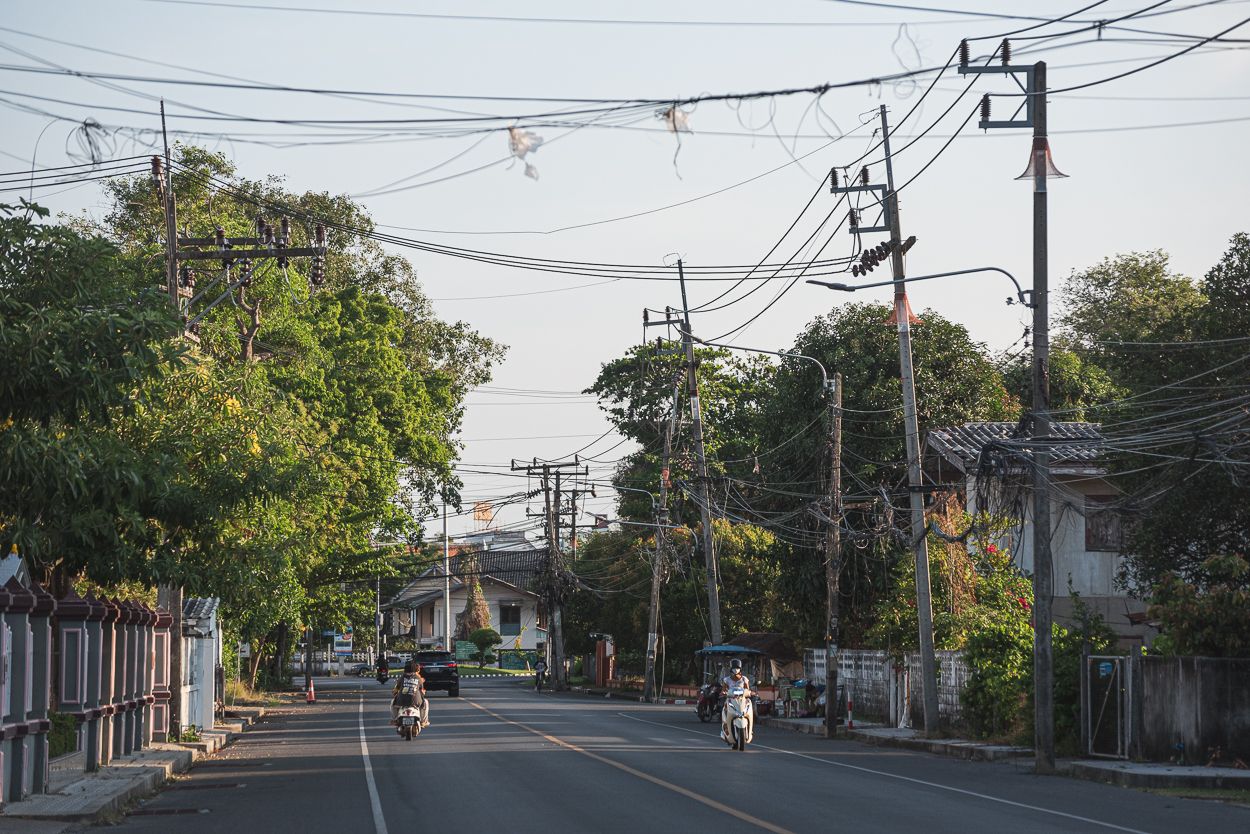
with the plan to visit the street with shining wires at sunset:
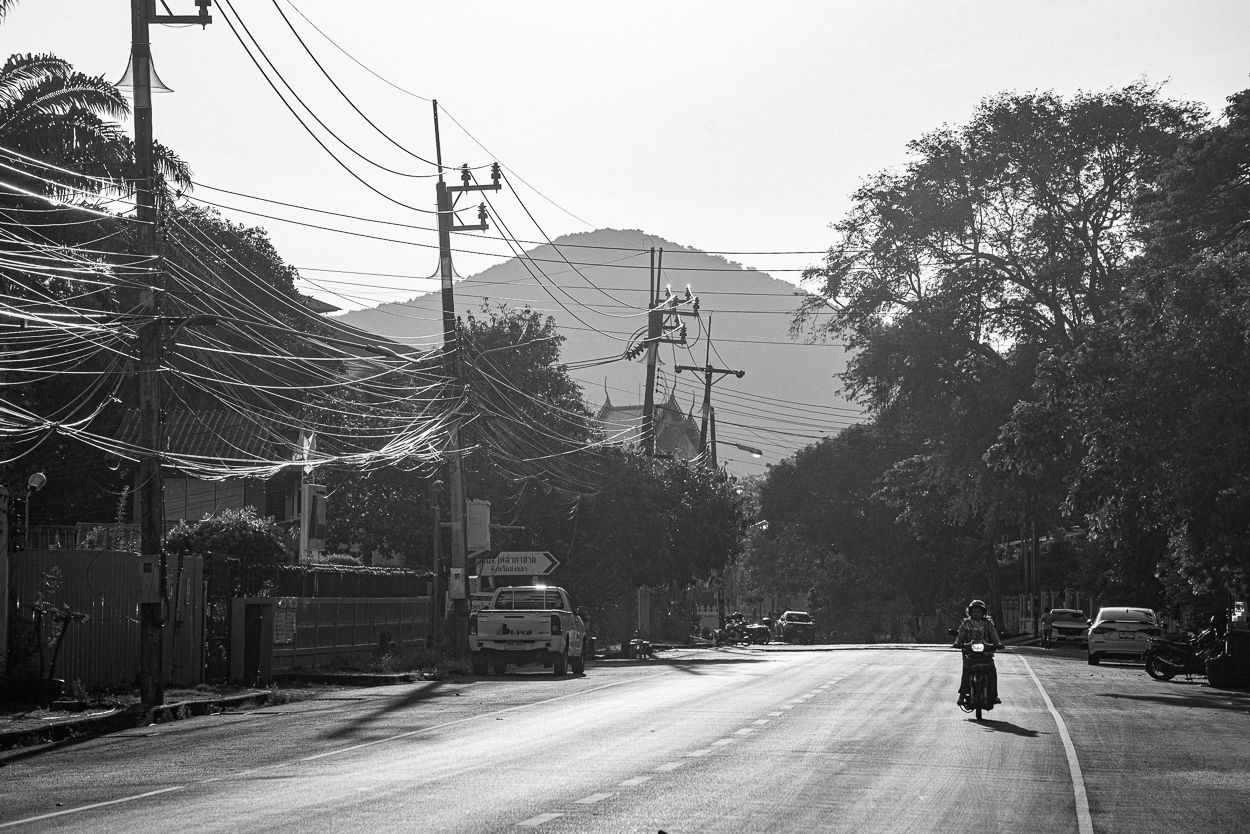
Aaadorable place for black and white photography.
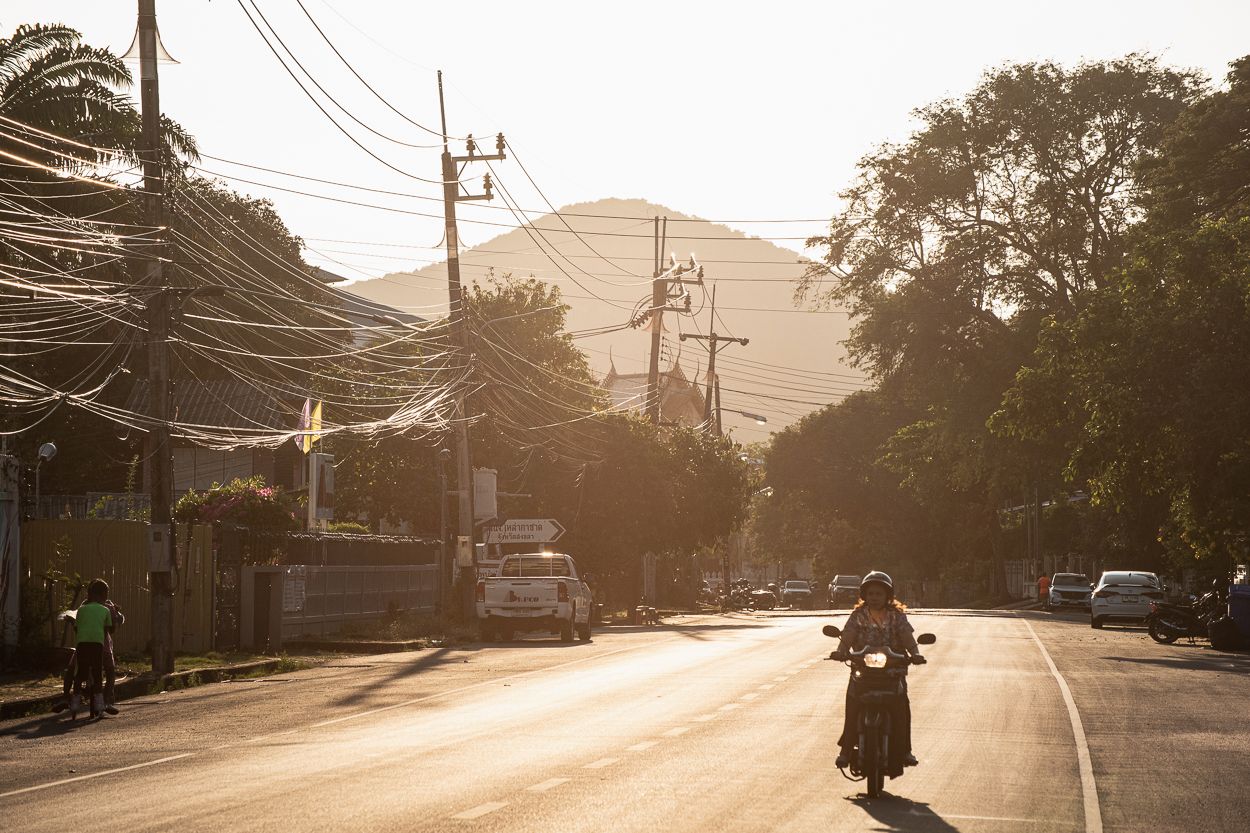
But color is okay too.
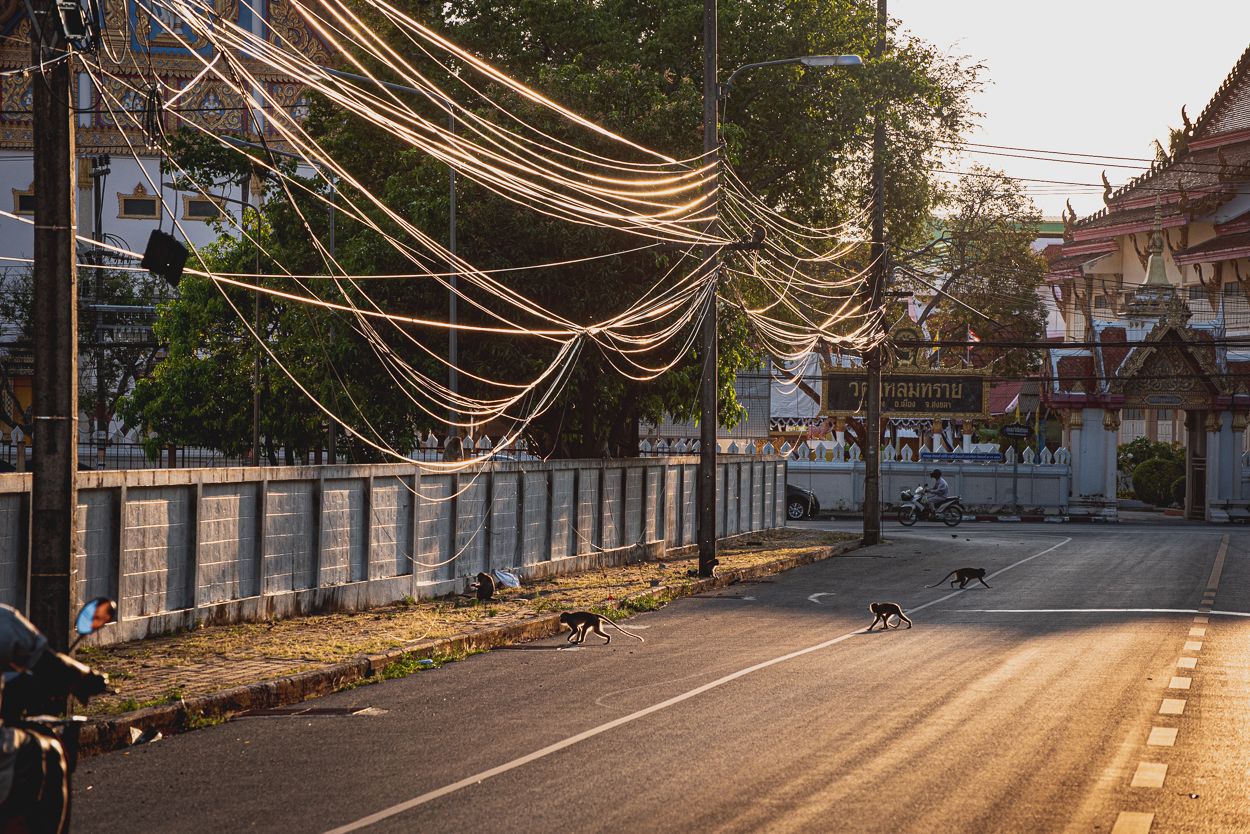
A unique place for shooting silhouettes of monkeys and shining cables - I will return to this place again and again - I plan to stay in Songkhla for another month or two. It's not only about monkeys, birds, the beach, many places to explore, and cheap prices - I feel more comfortable among Thai people than anywhere else and truly enjoy the vibe of a small city—especially a charming, non-touristy one like Songkhla.
I took these images with a Nikkor 70-300mm on a full-frame DSLR Nikon D750 on March 16, 2025, in Songkhla, Thailand.
